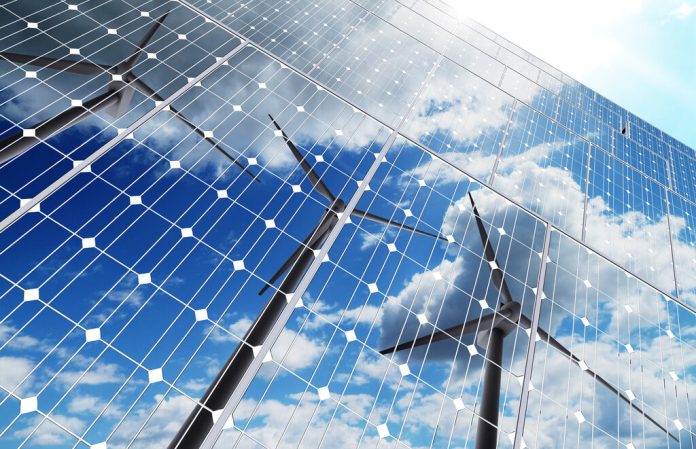In December 2023, renewable sources achieved a share of 19.5% of the available electricity.
The construction of solar power plants marked the development of new production capacities the most throughout 2023. A total of 238.7 MW of new capacity entered the power system, the highest of all technologies in the power system, so by January 1, 2024, we had 462.5 MW of installed solar power capacity in operation.
Hydroelectric plants played a dominant role in the production of electricity in December 2023, and due to the air temperature being 2.2 °C higher than the previous average, the consumption of electricity for heating was 52 GWh less compared to the consumption in previous years in December. Also, in December, there was a significant variability in daily consumption on workdays and during the holidays.
Aware of the interest that exists in understanding the evolution of electricity consumption and production, especially renewable energy, in Croatia and Europe, the importance of these technologies in combating climate change, and enhancing our commitment to be up-to-date with statistical data in the power sector, we present a monthly report on the power sector opportunities in the Croatian power system.
Power Sector Trends in Croatia in December 2023
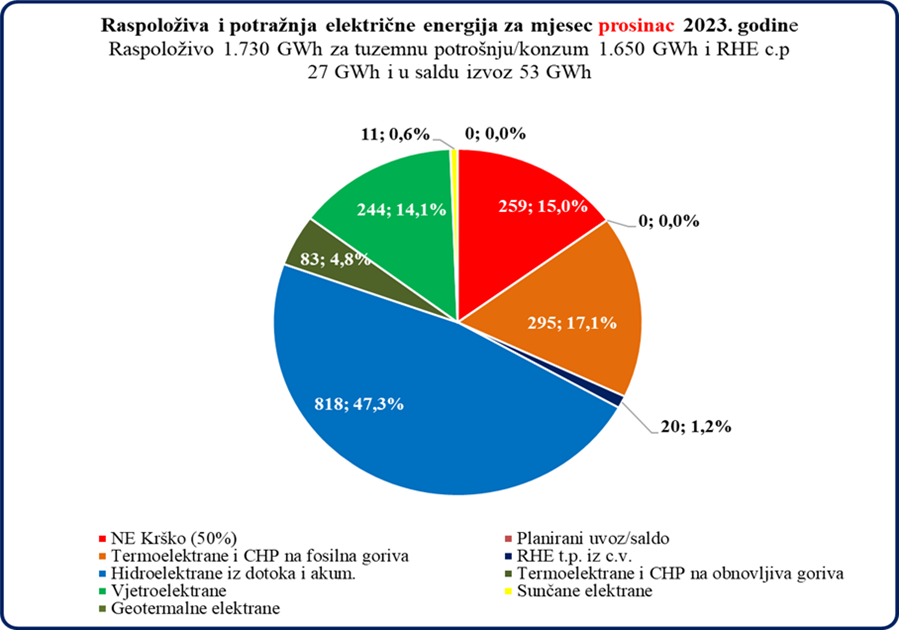
Hydroelectric plants played a dominant role in the production of electricity (available energy) in December 2023, with reservoir recharging amounting to 84 GWh.
TE Plomin experienced reduced production (35 GWh) during December due to operational issues, while RHE Velebit had significant activity in its pump-turbine operation (pump operation consumption was 27 GWh).
NE Krško operated at full power, 0.2% above its nominal capacity, and all safety systems were operational, with the Sava River heating far below the permitted 3 ºC.
Renewable energy sources completely met the electricity consumption on a daily level for 4 days in December.
To balance the hourly ledger, significant exchange on the interconnections was necessary (imports amounted to 95 GWh, and exports to 148 GWh) of electricity (net export of 53 GWh).
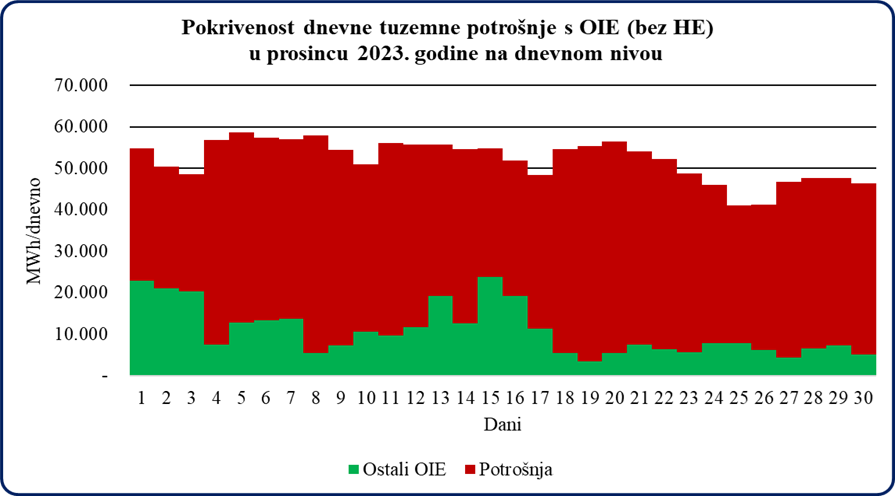
The maximum domestic daily consumption was 59,086 MWh (December 8, 2023), and the minimum was 41,021 MWh (December 25, 2023).
The maximum coverage of domestic consumption on a daily level by renewable energy sources (excluding large hydroelectric plants) was on December 15, amounting to 43.5%, with the production that day being 23,832 MWh, of which wind farms contributed 20,988 MWh at an average of 874.5 MWh/h.
The minimum coverage of domestic consumption on a daily level by renewable energy sources (excluding large hydroelectric plants) was on December 19, amounting to 6.2%, with the production that day being 3,452 MWh, of which wind farms contributed 478 MWh, averaging 19.9 MWh/h.
Wind Farm Production in December 2023
During November 2023, VE Bruvno with a capacity of 45 MW entered trial operation, so the installed capacity of all wind farms now amounts to 1,160.15 MW, while the approved capacity for connection to the grid is 1,136.85 MW.
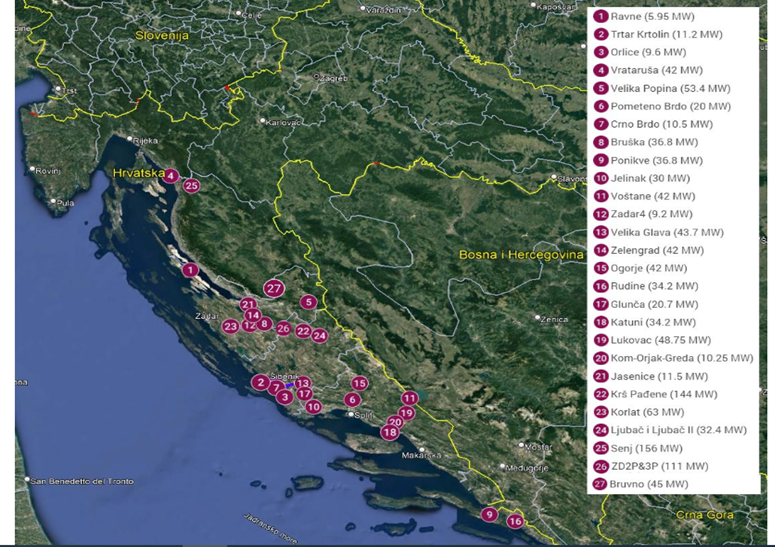
The total production of wind farms in December amounted to 243,901 MWh. The capacity utilization factor was 28.8% (the average for December in the period from 2011 to 2022 was 31.8%).
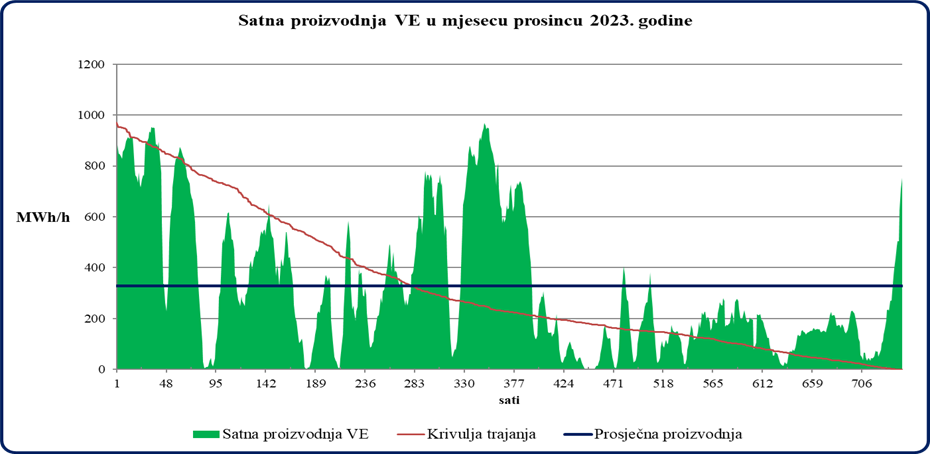
The average hourly production of wind farms in December was 327.8 MWh/h, with a maximum hourly production of 969 MWh/h, (maximum 15-minute production was 983 MW), and the maximum capacity utilization factor at the hourly level was 85.2%.
With the current installed capacity in 2024, given the average annual capacity factor from 2011 to 2023 of 27.3%, the annual production of wind farms is expected to be 2,726 GWh.
Solar Power Plant Production in 2023
The construction of solar power plants during 2023 marked the development of new production capacities the most among all technologies. A total of 238.7 MW of new capacity entered the power system, the highest of all technologies in the power system so by January 1, 2024, we had 462.5 MW in operation. This means that during 2023, an average of 19.9 MW entered operation monthly, which is excellent, especially compared to previous years.
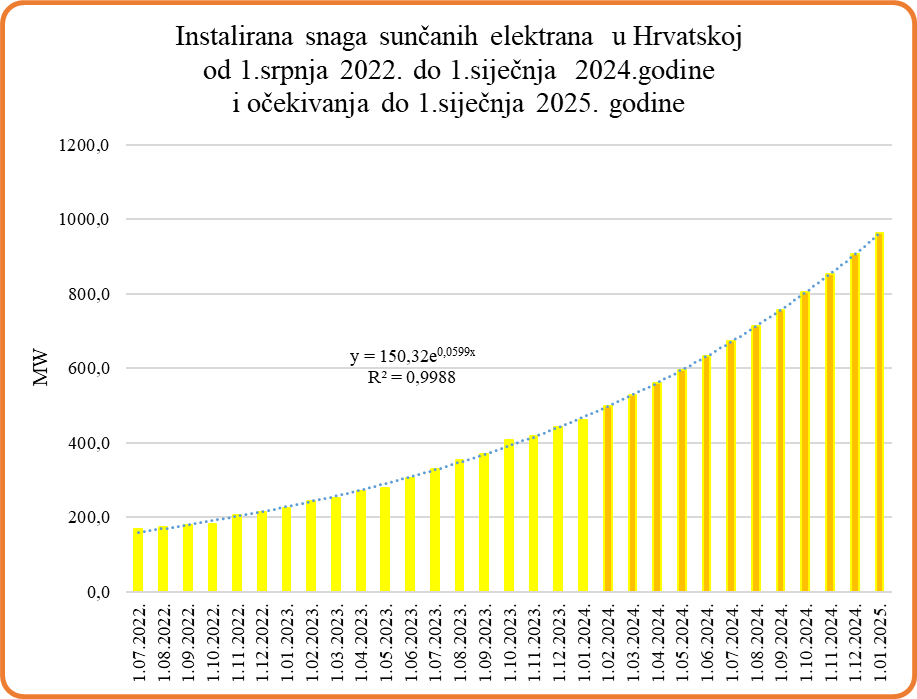
The development of solar power plants is following an exponential trend as shown in the upper figure. If this trend continues, and all the framework conditions for it are created, by January 1, 2025, we would have 963 MW in the system, representing an increase of 501 MW (averaging 42 MW per month). With average monthly capacity utilization factors from the replacement curve, the total production of all solar power plants with this capacity would amount to 1,147 GWh in 2024 (lower figure).
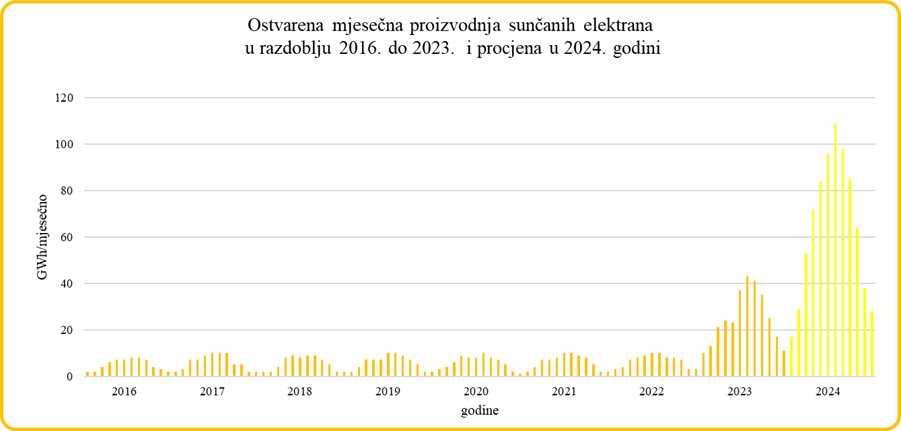
It should be noted that the production of solar power plants is seasonally oriented, as 70% of the annual production is achieved in the period April-September, and 30% in the period October-March. Such a distribution of solar power plant production is complementary to the production of hydroelectric and wind power plants, which is lowest in the summer months, thus solar power plants in this way increase the security of supply and operation of the power system.
Electricity prices on the Croatian exchange Cropex in December 2023.
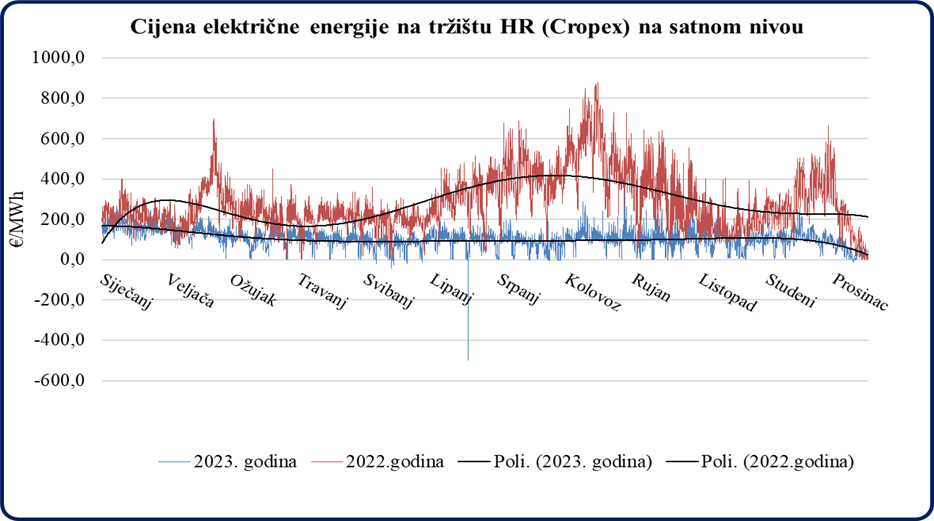
The average hourly price in December 2023 was €75.62/MWh, compared to December 2022, when it was €264.62/MWh, representing a decrease of €189.00/MWh, or 71.4%. Also, there was a decrease in the average electricity prices in December compared to November 2023 by €20.11/MWh.
In December 2023, the Euro-Peak price (08-20 hours) on the Croatian market was €89.86/MWh, which is higher than the average base price (00-24 hours) by €14.24/MWh.
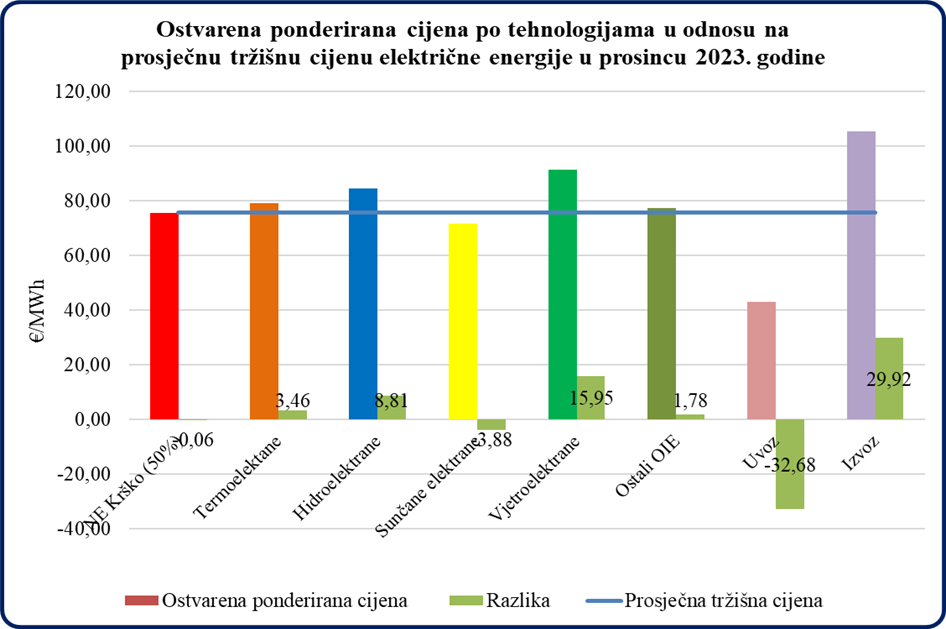
A very good realization of market value for almost all individual technologies in the power balance was achieved, thanks to the production operators, trading operators, and system operators who market the production of hydroelectric and thermal power plants and exchange at the most favorable market prices. Favorable trends in power sector opportunities and market prices in December 2023 also played a role. The overall economic effect of good operation by operators concerning market prices amounted to about +€15.7 million (excluding wind farms, solar power plants, and other renewable energy sources).
This report was created using publicly available data published on the websites: HEP, HOPS, ODS, HROTE, CROPEX, NE Krško, ENTSO, DZS, RTE France, RED Electrica, World Data, IEA, EEX, EPEX, IRENA
The analyses published in the monthly RESC Reports are made available to all those who wish to be informed about the operation and development of the Croatian power system. The quality and continuity of the service provided in these analyses stem from a sustainable vision focused on a culture of informing about the operation and development of renewable energy sources in our country.


